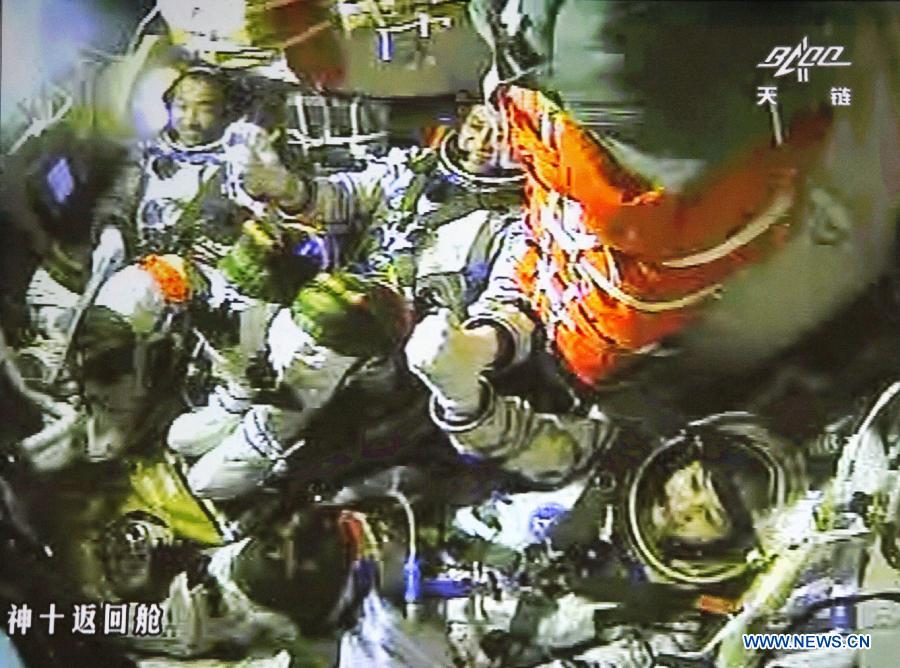


BEIJING, June 23 (Xinhua) -- China's Shenzhou-10 manned spacecraft successfully completed a manual docking procedure with the orbiting Tiangong-1 space module at 10:07 a.m. Sunday, according to the Beijing Aerospace Control Center.
Launched on June 11 from northwest China's Gobi desert, the Shenzhou-10 successfully completed an automated docking procedure with the Tiangong-1 on June 13, with three astronauts aboard the Shenzhou-10 entering the space module.
At 8:26 a.m. Sunday, the spacecraft was manually separated from the Tiangong-1 module.
After the Beijing Aerospace Control Center remotely examined the spacecraft and the module, the Shenzhou-10 approached the module, with astronaut Nie Haisheng piloting the spacecraft and the other two crew members, Zhang Xiaoguang and Wang Yaping, monitoring instruments and making sure the craft was on target.
At 10:00 a.m. the spacecraft made contact with the Tiangong-1 and at 10:07, the two connected.
According to their mission schedule, the astronauts will enter the space module again and carry out scientific experiments.
The Shenzhou-10 is China's fifth manned spacecraft. Its current flight is China's first application-orientated space flight since the country's manned space program started in 1992.
China is the third country after the United States and Russia to acquire the technologies and skills necessary for space rendezvous and docking procedures, as well as supply manpower and material for an orbiting module via different docking methods.
Previous docking procedures conducted between Shenzhou-type spacecraft and the space module include two automated dockings by the unmanned Shenzhou-8 in 2011 and both an automated and manual docking by the manned Shenzhou-9 in 2012.
The Tiangong-1 space lab has been in orbit for more than 600 days. It will remain in service for another three months.
The module is considered the first step in building a permanent space station, which the country aims to do by 2020.
 NATO Tiger Air Show 2013 kicks off in Norway
NATO Tiger Air Show 2013 kicks off in Norway 'Super moon' hangs in the sky over Rotterdam
'Super moon' hangs in the sky over Rotterdam Beauty contest held in Budapest, Hungary
Beauty contest held in Budapest, Hungary Mermaid Parade at Coney Island in New York
Mermaid Parade at Coney Island in New York  Beijing to have its own real Rubber Duck
Beijing to have its own real Rubber Duck Girls locked in cage-like tricycle on way home
Girls locked in cage-like tricycle on way home  Man arrested for killing six in Shanghai
Man arrested for killing six in Shanghai  Water gush out of Xiaolangdi Reservoir
Water gush out of Xiaolangdi Reservoir  Ancient burial complex in central China
Ancient burial complex in central China  Yang Mi covers for fashion magazine
Yang Mi covers for fashion magazine  Luxury China 2013 exhibition in Beijing
Luxury China 2013 exhibition in Beijing World Heritage: China's Hani Terraces
World Heritage: China's Hani Terraces 6th Int'l Auto Show held in Buenos Aires
6th Int'l Auto Show held in Buenos Aires  Soft gold -- gambiered Guangdong silk
Soft gold -- gambiered Guangdong silk A science class from above Earth
A science class from above Earth